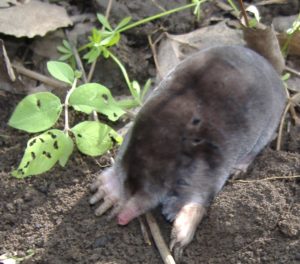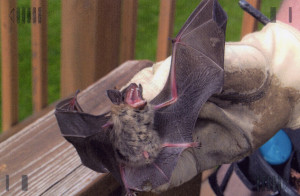Preventing Moles from damaging your lawn can be done! In fact, it is quite easy. There is a simple solution kinda like a long algebra equation, or maybe calculus. Well, maybe I like calculus, and algebra. Those (x) plus (y) formations and the zig to the zag, and don’t forget to carry over the pie symbol thingy. Yes equations can be quite fun! Well, maybe you don’t think so, but I do. Moles can be no different. Yes, there is an equation, and a solution! To figure all this out stick around and you’ll find out how easy it really is and you too can have complete victory over that lawn wrecking pest called: “THE MOLE”.
The Eastern Mole, Who Is He? Or She?

No it is not my intention to make this a scientific post claiming that I know everything under the sun about Moles and their habits. I definitely don’t want to bore you either. However, in order to fully understand why the Mole does what he does, it is important to know what the Mole does and why he does it. Let me highlight that again. It is important to know the habits of the Mole and his feeding patterns. This is the first step to understanding the complete Mole control equation. Most importantly remember this: Moles are insectivores. That’s right, it means they eat insects. Primarily Moles feed on earthworms and any other insect that happens to be in your lawn. Their feeding habits keep them very busy. On average a Mole will consume up to half their body weight daily. Once calculated a 6 oz Mole can consume up to 68lbs of invertebrates each year! Convert that over to our terms, that is the equivalent weight of 3 cases of pop! Another important reminder is that Moles travel. And traveling they do, up to 18 feet an hour or 100 feet a day! Moles NEVER, I repeat NEVER Hibernate. Which means they don’t store up fat. I wish I could do that, don’t you? So therefore, you can see that Moles are both an eating and traveling machine. This traveling and eating only means one thing for the homeowner: one damaged lawn. But hold on, you are now armed with knowledge and are headed in the right direction. Just like the G.I Joe slogan “Knowing Is Half The Battle”
Effective Controlling Options
We’ll break this section into two different categories. Let us look at options on what to apply directly to the lawn and options on what to do to remove an existing Mole in the lawn.
Step 1: Indirect Controlling Methods
These are variations of chemicals, sprays, and repellents that a homeowner can directly apply to the lawn to modify their lawn so Moles won’t habitate it. This is not a very good idea, and very costly for the homeowner. I have seen lawn care companies sell tons and tons of grub control products to homeowner’s through the years and can consistently say that this method is a waste of money for the homeowner trying to prevent Moles from establishing in their lawn. Fact is, Moles primarily eat earthworms. Thus, this idea may be good for the lawn care company but may further frustrate the problem. So how about repellents and other sprays? Although some scientific exploration and tests may have been conducted and these products may seem to give highly impressive testimonies from previous customers. I would have to say you’d be better off burying the money you spent directly in your lawn and then expecting some sort of return on your investment, rather than the repellent or spray effectively preventing or removing the Moles from your lawn.
Step Two: Direct Controlling Methods
There are many of these on the market which are: poisons, deterrents (scare devices such as sonic thingy), and traps. Some of these methods give promising results. Pay attention to your gut. Yes, I do think some are out to get your money. I’m sorry, Poison Peanuts? And how about the vibrating wands? I can speak with consistency one of my favorite things to do in the whole world is to trap a Mole right next to those vibrators. However, I don’t tell my client’s about it! They’re still upset over spending a small fortune on those things. Well, whatever the case I can say they do sell on the shelves at your nearest Hardware store, but do not consistently and effectively do their job. Okay, here is the answer that I promote. My method is 100% effective in removing and preventing Moles from establishing their residence on properties. Also, completely effective in the hands of a trained Mole expert who is trained to identify feeding patterns and travel habits of the Mole. Trapping is your answer. Put an effective Mole trap in the hands of a trained professional and look out! Game Over!
Why Trapping Is The Answer
What’s the big hoopla about trapping you ask? What makes trapping effective is outlined in two parts. 1. Knowledge of Moles feeding habits and their travel tunnels to these areas. 2. Knowledge of how the trap works and correctly setting the trap. To be effective in controlling Moles really relies on how well the Mole trapper can identify both feeder tunnels and travel tunnels. Focus on the travel tunnels and you’ll win. As far as traps are concerned.There really is no difference on which traps are most effective. Our company purchases a certain style and brand of trap and still spends much time devoted to modifying the trap to produce greater results. Sometimes I think about some traps on the shelves which could be just as effective as what I might have, but I would need to upgrade service trucks in order to haul a few hundred traps around. My suggestion would be to find a good trap that is both easy to understand how it works and spend some time properly setting it.
Why Offense Is Your Best Defense
Our Army consistently displays the American flag on our soldier’s right arm in a backwards direction. Ever wondered this? The idea is “our army is always moving forward”. In fact, our Army never pulls back unless it is for a strategic purpose. So I’ve been told. So the slogan goes, offense is our best defense. Mole prevention can be viewed the same way, offense is the homeowner’s best defense against invading pests such as the Mole. What makes this so easy? The next time a Mole decides to enter into your lawn, the first method of arsenal should be a Mole trap in an educated Mole trapper’s hand. So what do you do the next time you have a difficult Mole equation? Solve it with trapping! After all, this is the easiest answer to solve when handling any Mole problem!
About The Author
Jason has been removing hundreds to thousands of Moles in the St Joseph and Northwest Missouri area. His client’s properties include both a wide variety of commercial, municipal, and residential lawns. Jason prides himself by doing a good job and saving his client’s money by protecting their lawn from the most damaging lawn pest known to man: THE MOLE.


